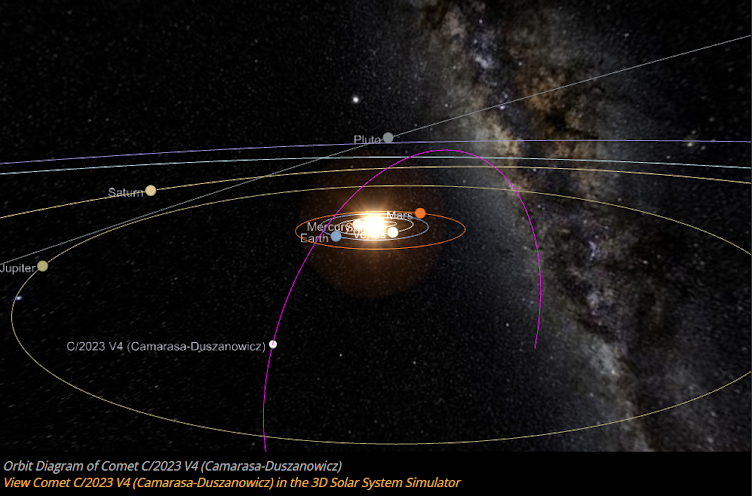https://www.minorplanetcenter.net/mpec/K20/K20UP3.html
Paginas
Buscar este blog
viernes, 30 de octubre de 2020
martes, 27 de octubre de 2020
domingo, 25 de octubre de 2020
lunes, 19 de octubre de 2020
domingo, 18 de octubre de 2020
2020 UE Type Apollo
https://www.minorplanetcenter.net/mpec/K20/K20U59.html
Some Near Earth Objects (NEOs) are not discoverable until after they pass close to Earth because they approach us from the daytime sky. 2020 UE is a 30-50 meter wide NEO that was just discovered at CSS by observer R. A. Kowalski on October 17th. It appeared in the night sky after passing about 0.7 Lunar Distances (LD) from Earth on October 15th. The object was moving over 230 degrees/day across the sky when it first became visible to our survey telescopes and was not detected until two days later. The image attached was taken 2 days before the discovery of 2020 UE. The asteroid appears as a long streak in a 30 second exposure due to its proximity to Earth and speed. These NEOs are particularly dangerous in that there isn't currently a method to find them shortly before impact, they must be discovered months or years before impact. In 2013 a 20 meter wide asteroid approached from the daytime sky and impacted over Chelyabinsk Russia damaging buildings and injuring hundreds of people.
Discovering these objects is the primary goal of the Near-Earth Object Surveillance Mission (NEOSM). By placing an infrared space telescope inside of Earth's orbit they will be able to look back towards Earth and spot these rocks coming from the daytime sky.
You can read more about NEOSM (formally NEOCam) here: https://neocam.ipac.caltech.edu/
by Catalina Sky Survey.
viernes, 16 de octubre de 2020
Suscribirse a:
Comentarios (Atom)












